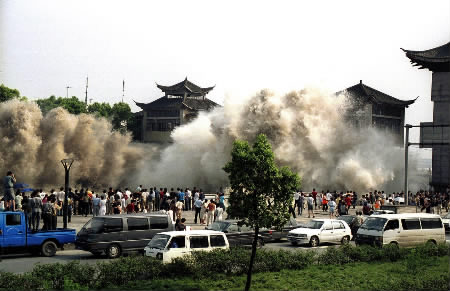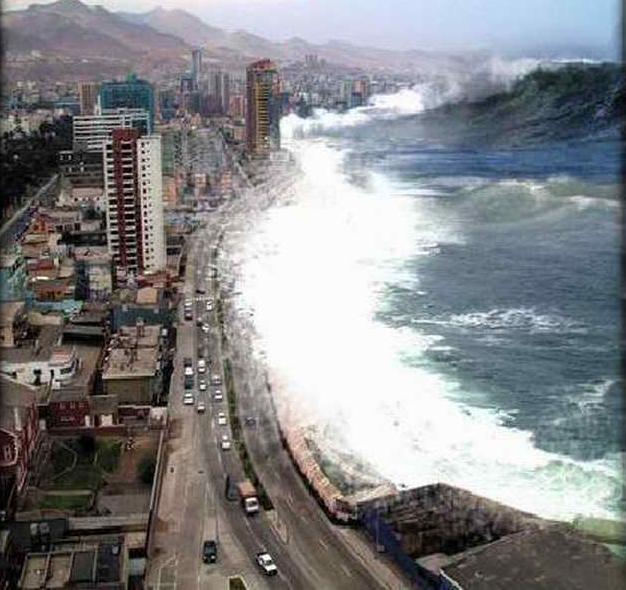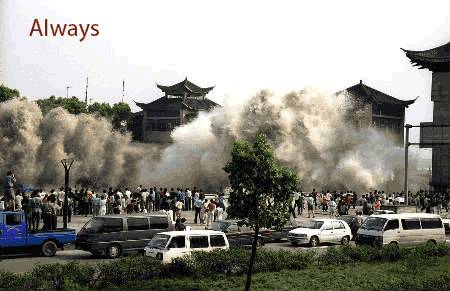

A tsunami is a set of ocean waves caused by any large, abrupt disturbance of the sea-surface. If the disturbance is close to the coastline, local tsunamis can demolish coastal communities within minutes. A very large disturbance can cause local devastation AND export tsunami destruction thousands of miles away. Tsunamis rank high on the scale of natural disasters. Since 1850 alone, tsunamis have been responsible for the loss of over 420,000 lives and billions of dollars of damage to coastal structures and habitats. Most of these casualties were caused by local tsunamis that occur about once per year somewhere in the world. For example, the December 26, 2004, tsunami killed about 130,000 people close to the earthquake and about 58,000 people on distant shores. Predicting when and where the next tsunami will strike is currently impossible. Once the tsunami is generated, forecasting tsunami arrival and impact is possible through modeling and measurement technologies.
Tsunamis are most commonly generated by earthquakes in marine and coastal regions. Major tsunamis are produced by large (greater than 7 on the Richer scale), shallow focus earthquakes associated with the movement of oceanic and continental plates. They frequently occur in the Pacific, where dense oceanic plates slide under the lighter continental plates. When these plates fracture they provide a vertical movement of the seafloor that allows a quick and efficient transfer of energy from the solid earth to the ocean. When a powerful earthquake (magnitude 9.3) struck the coastal region of Indonesia in 2004, the movement of the seafloor produced a tsunami in excess of 30 meters (100 feet) along the adjacent coastline killing more than 240,000 people. From this source the tsunami radiated outward and within 2 hours had claimed 58,000 lives in Thailand, Sri Lanka, and India.
 Underwater landslides associated with smaller earthquakes are also capable of generating destructive tsunamis. The tsunami that devastated the northwestern coast of Papua New Guinea on July 17, 1998, was generated by an earthquake that registered 7.0 on the Richter scale that apparently triggered a large underwater landslide. Three waves measuring more than 7 meter high struck a 10-kilometer stretch of coastline within ten minutes of the earthquake/slump. Three coastal villages were swept completely clean by the deadly attack leaving nothing but sand and 2,200 people dead. Other large-scale disturbances of the sea -surface that can generate tsunamis are explosive volcanoes and asteroid impacts. The eruption of the volcano Krakatoa in the East Indies on Aug. 27, 1883 produced a 30-meter tsunami that killed over 36,000 people. In 1997, scientists discovered evidence of a 4km diameter asteroid that landed offshore of Chile approximately 2 million years ago that produced a huge tsunami that swept over portions of South America and Antarctica.
Underwater landslides associated with smaller earthquakes are also capable of generating destructive tsunamis. The tsunami that devastated the northwestern coast of Papua New Guinea on July 17, 1998, was generated by an earthquake that registered 7.0 on the Richter scale that apparently triggered a large underwater landslide. Three waves measuring more than 7 meter high struck a 10-kilometer stretch of coastline within ten minutes of the earthquake/slump. Three coastal villages were swept completely clean by the deadly attack leaving nothing but sand and 2,200 people dead. Other large-scale disturbances of the sea -surface that can generate tsunamis are explosive volcanoes and asteroid impacts. The eruption of the volcano Krakatoa in the East Indies on Aug. 27, 1883 produced a 30-meter tsunami that killed over 36,000 people. In 1997, scientists discovered evidence of a 4km diameter asteroid that landed offshore of Chile approximately 2 million years ago that produced a huge tsunami that swept over portions of South America and Antarctica.
If you live less than 15 miles from the coast and feel violent shaking for several minutes, head for higher ground. The earthquake is your warning.

Home | Earthquakes | Hurricanes | Tornadoes | Tsunamis | Donations
© 2011 National Disaster Education Association. NDEA. This website is fictional.